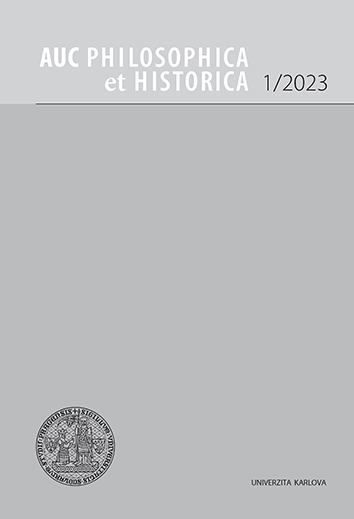AUC Philosophica et Historica je víceoborový akademický časopis zaměřený na humanitní a společenskovědné obory (filozofie, psychologie, pedagogika, sociologie, obecné, české a hospodářské dějiny, pomocné vědy historické a archivnictví, etnologie).
Časopis je indexován v databázích CEEOL, DOAJ a EBSCO.
AUC PHILOSOPHICA ET HISTORICA, Vol 2016 No 1 (2016), 249–263
Egon Schiele: Autoportréty z let 1910 a 1911 v kontextu psychopatologie
[Egon Schiele: The Self-portraits of 1910 and 1911 in the context of psychopathology]
Zdislava Ryantová
DOI: https://doi.org/10.14712/24647055.2016.28
zveřejněno: 26. 09. 2017
Abstract
Older interpretations of Egon Schiele’s self-portraits are based primarily on psychoanalysis, seeking the source of inspiration of his artistic expression in the artist’s spirit and mind. Later views associate the artistic style employed by Schiele and other Vienna-based expressionists with the development of psychiatry and hysteria, a diagnosis discovered by Jean-Martin Charcot (1825–1893). The extensively published research on hysteria, and later also of other neuropathological disorders, affected the scientific as well as the social environment. Photographs which feature Charcot’s construct of hysteria as well as photographs of patients suffering from other neuropathological disorders spread from the Salpetriere Hospital in France to Vienna thanks to periodicals. The photographs that illustrate hysteria typically feature multiple pictures of female patients in extreme tonic spasms during a bout of hysteria. The extreme nature of the photographs and often also their erotic overtones ensured their wide-spread publicity. These photographs helped disseminate the image of “a pathological body” among the broader public, with the “language” of this body subsequently appearing in fine arts as well as in the theater. Artists often cooperated with clinics and mental institutions, be it to paint portraits of the patients or to decorate the institutions’ interiors. This allowed them to stay in touch with new research and its documentation. Egon Schiele maintained contact with these artists as well as with doctors, which afforded him access to the publications which documented the patients. Society gazed at photographs of exalted women (hysteria) and deformed male bodies (neuropathology) with voyeuristic interest. The language of the “pathological body” was supposedly comprehensible in general and the “pathological body” was perceived as a symptom of the times. Egon Schiele employed the extreme expression of the deformed bodies in his self-portraits as well as in the portraits of his benefactors and collectors. The quick succession of Schiele’s self-portraits can be seen as an obsession to extensively document bodies of people with neuropathological disorders to map out and characterize the disease. At the same time, Egon Schiele was evidently attempting to fully encompass himself.
klíčová slova: Egon Schiele; Self-portraits of 1910 and 1911; psychopathology; The Salpetriere Hospital
